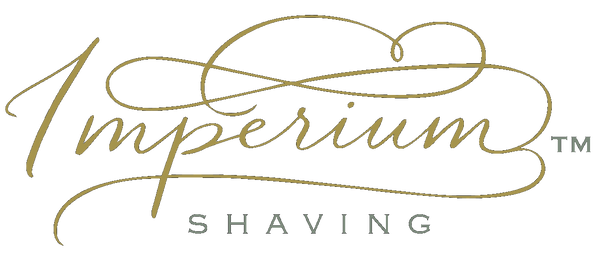
The End of the Badger Shaving Brush?
In the ever expanding world of classic shaving, west coast shaving, east coast shaving, and everything in between the pillar of that traditional shave has been the silver tipped badger hair shave brush. But recent developments have called that preference into question. Have synthetic materials finally met the challenge?

New Synthetics Are Better Than High Grade Badger? We Take a Deep Dive:
Natural hair shave brushes are generally made from the coat of one of three animals: horse, boar, or badger. Of those three, only horse hair is “harvested” in a way that does not harm the animal: they’re merely taken from cast-offs of the grooming process.
Boar and badgers, however, are trapped and killed for their pelts. The processing of badgers from China in particular (widely regarded as a pest and trapped under license there)--by far the primary source of badger hair for shave brushes--have come under criticism for years as unnecessarily cruel.
Most wet shaving consumers in the West are only dimly aware of the controversy. But in late 2018 Proctor & Gamble committed to eliminating badger hair shave brushes from their The Art Of Shaving inventory.
In terms of performance the badger hair shave brush, particularly the higher grades, was the undisputed choice especially when whipping up a good lather to reduce razor burn. However, the last few years have seen a dramatic acceleration of the technology behind synthetic hair shaving brushes, with several new, and superior, materials developed and many new knot styles appearing. The performance of these brushes can easily meet-or-beat high end badger brushes, and some users think they can hold their own against the vintage AAA+ Badger brushes. So the with all this advancement ,and the inherent concerns with badger hair, we think its the beginning of the end for the natural hair brush. And while we will always have one or two traditional badger brushes in our quiver, what we use daily is undoubtedly a synthetic. All Imperium Shaving brushes are cruelty free, made from hand bound Uber soft 3 fibers.

Material Evolution
Early materials used in synthetic shave brushes were generally variants of nylon. Tynex®, along with filament technologies like Natrafil™, were the basis of several brush products. Taklon® superseded Tynex® in later products.
Most recently though, materials made out of variants of Polybutylene terephthalate appear to be more common in synthetic shave brushes. This state of the art technology give the knots the softness and shape of Badger with the snap and "bounce" of a high grade synthetic. This new technology also holds more soap than badger hair as well as being cruelty free.
This article at Daily Lather goes into more detail if you’re interested.
Synthetic Knot Types
While most synthetic knots have some similar characteristics, there are things can alter the “feel” of the knot: density, loft, shape of the knot, and the size of the bore for the knot all play a part in defining an individual brush.
If the synthetic brush is advertised as denser than normal, there should be some additional “backbone” feel due to the extra fibers. This may require a bit more pressure on the brush to make the knot splay.
How high the knot is set on the brush may give it a more “floppier” feel; conversely, a knot set lower in the brush may give it more backbone.
Like badger brushes, the shape of the knot also plays a role in how the knot performs. The bulb shape, as sold by Imperium, will prove a little more back bone and the fan shape will splay a bit better.
The last thing that can affect the performance of the synthetic knot is the diameter of the bore in the handle for the knot. A 24 mm knot in a 24-25 mm bore hole won't have enough room to splay out, so the knot may feel tight, resulting in more backbone. A 24 mm knot in a 25-26 mm bore may have more room to splay.
Larger knots with more fibers that will need to splay. Brushes with a high glue bump may provide more backbone to the knot.
Most of the 24 mm synthetic knots have a loft set to between 52-54 mm. Anything 52 mm and below will have more backbone. Anything set from 54 mm and up will result in more flop. We use a 24 mm knots for a good backbone with bounce in Uber soft 3 for smooth even splay.
TYPES OF SYNTHETIC KNOTS:
Plisson - Super Plush Type
This knot first of the "modern synthetic era" made its appearance in the Plisson Brush. This knot became famous because it was the first “recent” synthetic knot that offered a noticeable improvement in performance, rivaling animal hair. This knot is still very popular and is still offered by many brush makers. It goes by many names but probably has “Pliss” in the name.
Ubersoft (1 & 2 & 3)
The Ubersoft knot was the first synthetic offering that provided soft tips with a strong backbone. For those that enjoy the backbone found in 2 band badger or boar, this was the synthetic equal. It was later offered in a Version 2 in a fan shape. The fan shape gave it a better splay and made it excellent for face lathering. As the name suggests this is a very soft brush that also hold its shape. Considered by many to be the best knot (synthetic or natural) on the market.
Tuxedo - Black Wolf - Black Tie - Luxedo
The Tuxedo has become a popular synthetic knot for its unusual appearance. It has super soft tips and medium backbone. The fibers are black with white tips. This knot has natural splay and is not as springy as some synthetic knots. With this synthetic knot, Some recommend not getting a high-density version of this knot. Many consider the Tuxedo knot shave brush the Goldilocks knot of the synthetic world--It’s just right across the board.
Timber wolf
The Timber wolf synthetic shave brush knot introduced a new level of just how soft synthetic shave brush tips can get--it is often described as “Plush.” If you want to know what “plush” feels like, think of how your wife’s makeup brushes feel. Backbone is low-mid. This knot is grey with black tips. Because the fibers are a tad thinner, there are more in this knot compared to other synthetic brushes. Because of that, it won't have as great flow through.
Silk smoke - Hawk
This knot is gray with white tips. It has even softer tips than the Timber wolf. The biggest difference is this knot has a strong backbone. When you feel the knot dry, you could easily think that this knot may have too much backbone. The backbone can feel springy, but when wet the backbone on this knot is very pleasant. With most other plush knots, the fibers are thinner. The Silks moke synthetic shave brush gets the backbone from the density. It has mid grade flow through but the nice scrub from this knot makes it shine.
Synbad - Mew
The Synbad synthetic shave brush knot is a brown knot with white light cream tips. The fibers are thicker than the average synthetic knot so that will be the main source of the backbone. The backbone is low-medium. This reminds some of a 3 band silver tip with just more backbone.
Cashmere - Angel
This knot may be the most underappreciated Synthetic knot out there at the moment. The Cashmere synthetic shave brush knot has plush tips and is a lighter shade of beige. While it's not the most aesthetically pleasing knot to look at, this brush is a powerhouse. This brush receives high marks all across the board as is our second choice behind the Ubersoft. There is little to no backbone on this knot: if backbone is important to you, pass on this type unless you can find one with a deeply-set loft. This brush has the nicest flow through of any knot out there.
Faux Horse
This knot is a darker brown. And it is the equivalent of its natural fiber counterpart. Unlike the actual Horse fiber the Faux Horse synthetic shave brush knot these fibers don't tangle, so there is no need to comb the fibers after every shave. The backbone is low and you can still feel a springiness to it. There comes a point where a lot of the synthetic knots feel the same, and the only thing that is different is the actual color of the fibers. This one happens to be one of those.
Gamechanger - Boss
The Gamechanger knot was introduced shortly after the Tuxedo knot. The color of the knot is a darker Gray with black soft tips. While it's not the best-looking knot, can be a solid “daily driver.” The Gamechanger synthetic shave brush knot has the backbone most want with the soft tips with great scrub.
Ghost
The Ghost knot is about 90% the Gamechanger knot, just white. Because the fibers are all white, you can see some of the fibers can be a bit wavy. This is where the back comes from in this knot.
Silver Synth
The Silver Synth brush knot resembles the original Uber soft knot but it captures the look of 3 band silver tip knot. The backbone is medium and the tops are on the “border” of soft and plush. This knot can feel springy, but when it’s wet the backbone feels like a natural fiber brush. This brush excels at lather flow through. “Painting” your lather with this brush work well.
Full Moon
The Full moon shaving knot is nearly identical to the silver synth knot with just more of a balloon bulb shape. The fiber is a bit thicker and the tips cross into the plush category. This knot is great for both bowl and face lathering.
Mother lode
When the mother lode knot first came on the scene, the color was a big turn off to most. It has a dark maroon brown color with off white tips. This knot has the thinnest fiber but also the plushest tips available. Because these knots were extremely dense and the fibers were really thin, finding the right loft is important to get super plush tips and a different kind of backbone that can not be found in any other knot. Set this knot 2-4 mm deeper for the best result.
Where To Buy?
Unfortunately many of these synthetic shave brushes are not as widely available as their animal hair cousins. Most are available from smaller artisans working with small-batch inventory. We use Ubersoft3 knots that are hand bound in Chicago.
This article largely contributed by Abe Villela of West Coast Shaving, Sharpology, and Shave tutor.)

3 comments
You can use synthetic if you support more drilling for oil which is required to make synthetic brushes. I’d rather have my brush made from hairs from an animal which is going to die regardless.
a razor comb, you would first comb your hair in the direction you want it to go. razor comb
Then, you would hold the comb with the razor side facing down and use it to gently shave or trim any unwanted hair.
Wow! What a comprehensive article! As a vegetarian and animal lover I am so happy to hear about the switch from animal hair to synthetic. I have always loved Imperium’s products for their design and clean shave so it’s nice to know they are animal conscious as well. Great article! Thank you!